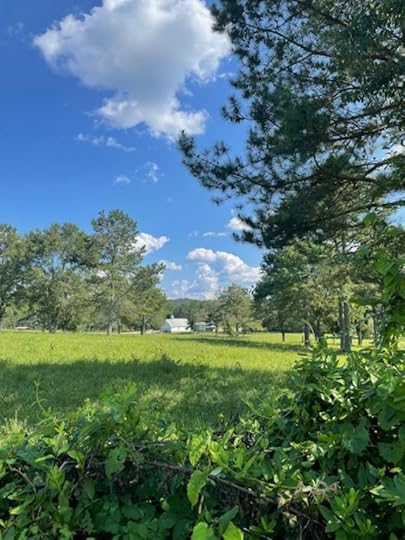From dust we came and to dust we shall return
TL;DR–it’s Ash Wednesday, I participated in the imposition of ashes for the first time, and it was an incredible experience of God

The last several years, I have become more and more interested in learning about liturgical worship. I grew up Baptist/evangelical, so liturgy wasn’t really a thing. My current church is very small, but our theology and the structure of our services likely mimic a Baptist church pretty closely; you won’t find any vestments or corporate readings in our “sanctuary” (which is a prefab building with a homemade wooden stage). So besides visiting my grandpa’s Methodist church here and there growing up, I have very little experience with liturgical services. Yet somehow, the last few years, I have felt drawn to the idea more and more–the idea of something that feels sacred and holy, that helps me worship, experience, and connect with God in a different way.
I’ve read books like Liturgy of the Ordinary: Sacred Practices in Everyday Life, and The Circle of Seasons: Meeting God in the Church Year. I have implemented liturgy and the lectionary into my personal life in small ways, like praying Lectio Divina or reading liturgies from books like Every Moment Holy: New Liturgies For Daily Life. I love nothing more than when my church has “chapel service” in our little white wedding chapel; the sloped wooden ceiling, long pews, and sunlight slanting through the windows have always seemed to me to create a sense of hushed reverence and holiness. I’m big on the idea that Christianity is an embodied faith, and as such, we should experience Christ through not only our head and heart but also with our senses–our whole life.

And recently, as I continued to think and read and pray about my pull toward liturgy, I discovered that someone had written a book about this very topic. Ever Ancient, Ever New: The Allure of Liturgy For A New Generation by Winfield Bevins talks about why young people are flocking to liturgical churches in America. I don’t agree with everything said in the book, but it provides a great overview of what exactly is drawing in this younger generation, and how and why you might choose to incorporate liturgy into your own life (through both corporate and personal worship). Bevins posits that young people are interested in liturgical churches because they want:
A holistic spirituality that engages their whole person with the gospelDepth and mysteryA historical rootedness that embraces the origins of their faith in the Christian liturgical traditionA countercultural faithA sacramental spirituality that offers a multi-sensory worship experienceSpiritual practices that provide an anchor for their faithBevins explained how liturgy sanctifies us as we participate in the story that it tells. Liturgy gives us structure and a community. As he spoke to millennials and Gen Z, he found that they’re tired of being entertained. They want to be fed. And they want to feel connected to the global and historical church. These are all things I relate to. (I remember hating youth group and youth events as a teen, and I think these are some of the reasons why.) Overall, the book was an interesting read, and it was nice to realize that I’m not alone in this thirst for something that I can only describe as sacred and holy.
So tonight, I took another step. I should preface the rest of this post by saying that I absolutely love my current church. I’ve been there for six years total this spring and I couldn’t imagine being anywhere else. Anytime I think about my church, my heart overflows with love. I love our services, I love our people, and I am growing there. Yet as my schedule and energy allow, I am also interested in seeking out additional corporate worship opportunities that follow a liturgical structure.
I tried to go to a Maundy Thursday service the last few years, but Thursday is my busy day and I didn’t make it. This year, I was determined to go to an Ash Wednesday service–something I’d never done before. (Ash Wednesday is the first day of Lent, and some denominations, such as Catholics, recognize this day by receiving ashes marked on their forehead as a sign of mortality and repentance.) I found a large Methodist church near me and attended their service by myself this evening.
Already, as I entered the church and saw the sign “Please enter the sanctuary in silence and meditate on the love of God,” I knew this was going to be exactly what I’d been craving. I sat and thought about the suffering Jesus went through, suffering greater than any human has ever known–not only the physical suffering, but crying out on the cross that God had forsaken Him. I thought about Jesus going into the wilderness and I wondered if He found grace there, like Israel in Jeremiah 31:2. I asked God to help me experience Him in a new way during this service. But I wasn’t prepared for how meaningful it would be.

The songs we sang in the service were full of so much rich theological truth that I wanted the choir to slow down, to give me time to parse through the beauty of each verse. Corporate reading of Scripture, “passing the peace,” a time for private prayers of confession–it was all new to me, but I eagerly soaked it in. I felt like I had come hungry and I was being fed–so much so that my cup overflowed.
Since this was an Ash Wednesday service, it of course included the imposition of ashes. Traditionally, the ashes are made by burning the palms from the previous year’s Palm Sunday. During the service, congregants quietly formed a line in front of the pastor, who took his finger and made a cross with the ashes on each person’s forehead, saying, “From dust you came and to dust you will return. Repent and believe in the gospel.”
After receiving my ashes, I returned to my seat in the pew and sat in the dim sanctuary, listening to the soft organ music and the refrain of the pastor repeating over and over to each person: “From dust you came and to dust you will return. Repent and believe in the gospel.” And, unexpectedly, I started to cry. I felt such a great awareness of my sin, of how small and human I am–and yet, of the greatness of God’s love (so much so that He would think to send me Italian ice on my birthday–which is a whole different story… see below). I felt an overwhelming sense of peace.


When the Ash Wednesday service was over, I found myself incredibly disappointed. I didn’t want it to end. The choir filed out of the sanctuary and the pastor snuffed out the candles. Then the congregants walked out in silence and went to our cars to go home. I felt sober and reflective as I drove home. Tears had filled my eyes many times during the service, not just once.
Learning about different types of liturgical worship over the last few years has deepened my faith and added a level of richness that it didn’t have before. I know I keep using the words sacred and holy, but that’s how these things feel–and that’s what I want. I want to be reminded of the greatness of God, to experience Him and meditate on Him with all of my senses, to participate in sacraments that serve as outward signs of an inward work of grace. All of those things happened tonight at the Ash Wednesday service I attended. It was just a hourlong service; there weren’t many people there. But I experienced God in a beautiful way that was unlike anything I ever have before.
As I walk past the mirror tonight and catch a glimpse of the ashes smudged on my forehead, I am reminded that I am a sinner in need of repentance and grace. I am mortal; I will die. But Jesus’ death and resurrection has triumphed over all of these things.
And now, we wait for Easter.




